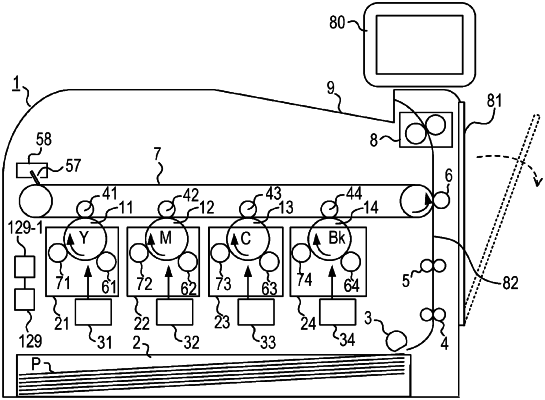| CPC G03G 15/205 (2013.01) [G03G 15/2053 (2013.01); G03G 15/2064 (2013.01)] | 3 Claims |

|
1. An image forming apparatus for forming a toner image on a recording material, the image forming apparatus comprising:
a photosensitive member;
a developing roller configured to supply toner to the photosensitive member and to form the toner image;
a fixing portion that includes a nip portion forming member configured to form a nip portion to nip the recording material on which the toner image is formed, and a heater having a plurality of heat-generating elements arranged in a direction orthogonal to a conveying direction of the recording material, wherein the fixing portion is configured to heat the toner image formed on the recording material utilizing heat of the heater at the nip portion to fix the toner image on the recording material; and
a control portion configured to independently control power supplied to the plurality of heat-generating elements,
wherein the image forming apparatus is configured to change a heat distribution in the direction orthogonal to the conveying direction of the recording material by the plurality of heat-generating elements in accordance with the image to be formed on the recording material, and
wherein, when restarting image formation after a jam clearing process in which the image forming apparatus is stopped and the recording material nipped in the nip portion is removed, the control portion changes the heat distribution by the plurality of heat-generating elements to a second distribution different from a first distribution corresponding to the image so that temperatures of non-image areas of recording material elements where the image is not formed at the restarting image formation are higher than the temperatures of the non-image areas of the recording material when the toner image is heated before jam occurs.
|